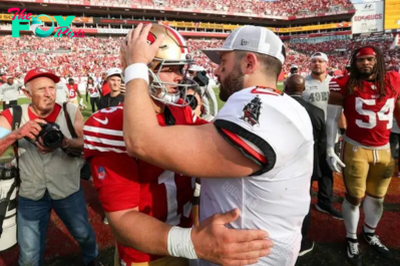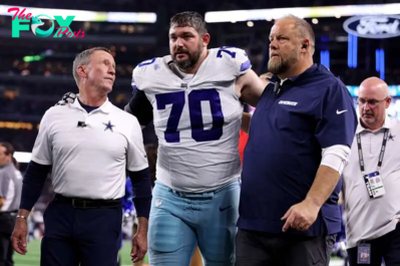NFL
Why does Dobbs have no hair? The Vikings quarterback’s medical condition he wants you to know about
Josh Dobbs, an American professional football player, rose to fame during the 2023-2024 NFL season. Despite facing challenging circumstances, he played exceptionally well and quickly became a household name. Dobbs was traded to the Minnesota Vikings in the middle of the season after their starting quarterback, Kirk Cousins, suffered a season-ending injury. This move proved a turning point for the Vikings, as Dobbs’ exceptional performance helped them stay competitive and in contention for the playoffs.
As Dobbs’ popularity continues to rise, fans are eager to learn more about him. They are particularly curious about his unique appearance, as he has no hair on his head or face. Although numerous factors can lead to hair loss, it’s unclear why Dobbs has no hair. Some speculate it may be due to a medical condition, while others believe it’s a personal choice.
Josh Dobbs is a professional American football player who has gained recognition for his advocacy work for alopecia. This autoimmune disease results in hair loss on the head and face. Josh has been personally affected by the disease and has been open about his struggles with it. Despite the challenges he faces, he has become a vocal advocate for raising awareness about alopecia and promoting research for its cure.
Josh joined the NFL in 2017, and although his playing time has been limited to serving as a backup quarterback for various teams, he continues to make an impact both on and off the field. In addition to his advocacy work, Josh is known for his academic achievements. He graduated from the University of Tennessee, earning a degree in aerospace engineering, hence the nickname “Pastronaut.” His intelligence and dedication to his causes have made him an inspiration to many, both on and off the Football field.
What is alopecia?
Alopecia areata is a disease that occurs when the immune system attacks hair follicles, leading to hair loss. Hair follicles are structures in the skin that form hair. Although hair loss can occur anywhere on the body, alopecia areata typically affects the head and face. Hair usually falls out in small, round patches, about the size of a quarter. However, in some cases, hair loss can be more extensive. Most people with alopecia areata are Healthy and have no additional symptoms.
The course of alopecia areata can vary from person to person. Some individuals experience episodes of hair loss throughout their lives, while others only experience one episode. Recovery is also unpredictable, with some individuals experiencing complete hair regrowth while others do not.
Although there is no cure for alopecia areata, there are treatments available that can help hair grow back more quickly. Additionally, there are resources available to help individuals cope with hair loss.
Alopecia areata can affect anyone. It affects both men and women equally, and all racial and ethnic groups can be involved. While it can onset at any age, most individuals experience it in their teens, twenties, or thirties. In children younger than age 10, it tends to be more extensive and progressive.
-

 NFL7m ago
NFL7m agoNFL Fans React To Kay Adams’ Hot Tub Photos
-

 NFL2h ago
NFL2h agoSteelers vs Browns prop betting picks: Best player prop bet for TNF | Pickswise
-

 NFL2h ago
NFL2h agoNFL Parlay Picks for This Week at +990 | Pickswise
-

 NFL3h ago
NFL3h agoNFL prop bets Week 12 2024: Texans vs. Titans
-

 NFL3h ago
NFL3h agoNFL prop bets Week 12 2024: Buccaneers vs. Giants
-

 NFL8h ago
NFL8h agoDraftkings Best NFL Showdown Picks: Steelers vs. Browns 11/21/24
-

 NFL8h ago
NFL8h agoSteelers vs. Browns 2024 Week 12: Injured players, inactives, latest injury updates
-

 NFL8h ago
NFL8h agoBest NFL Betting Promos | Unlock $5000+ in Steelers-Browns, Week 12 Bonuses & Offers





















